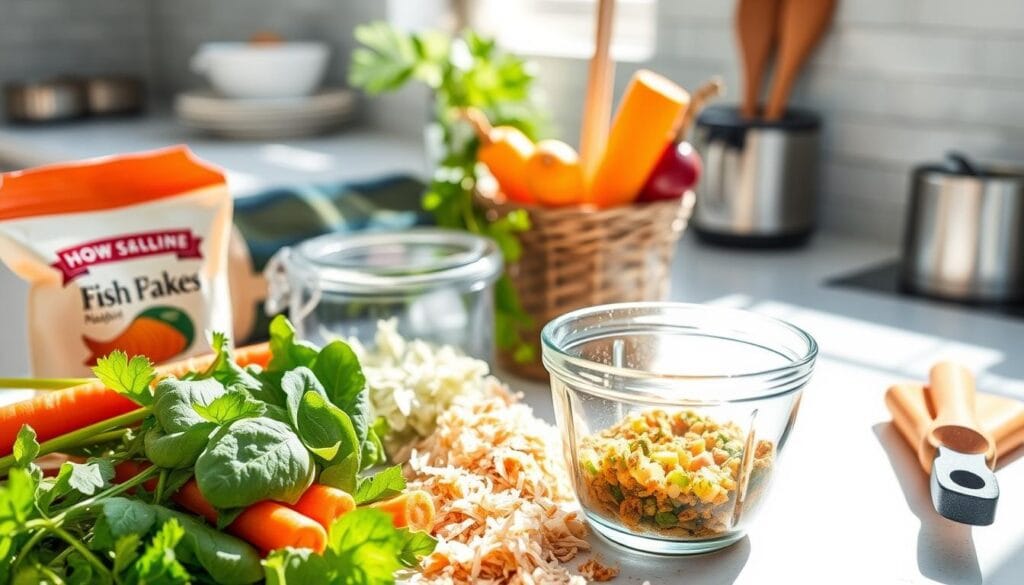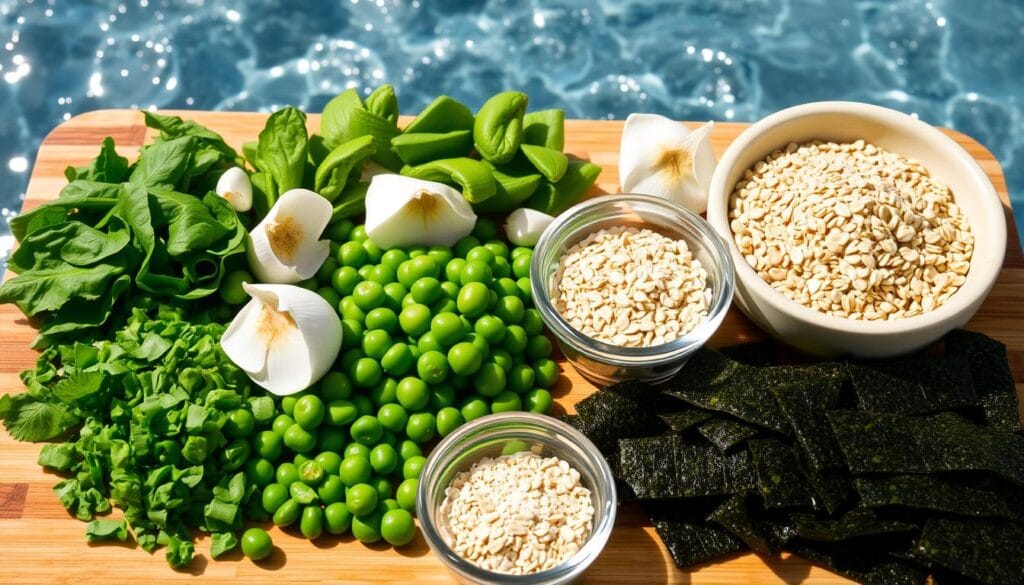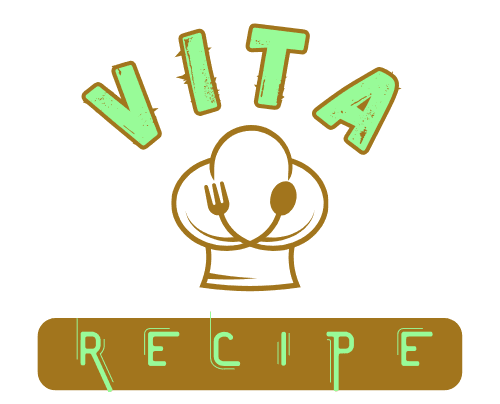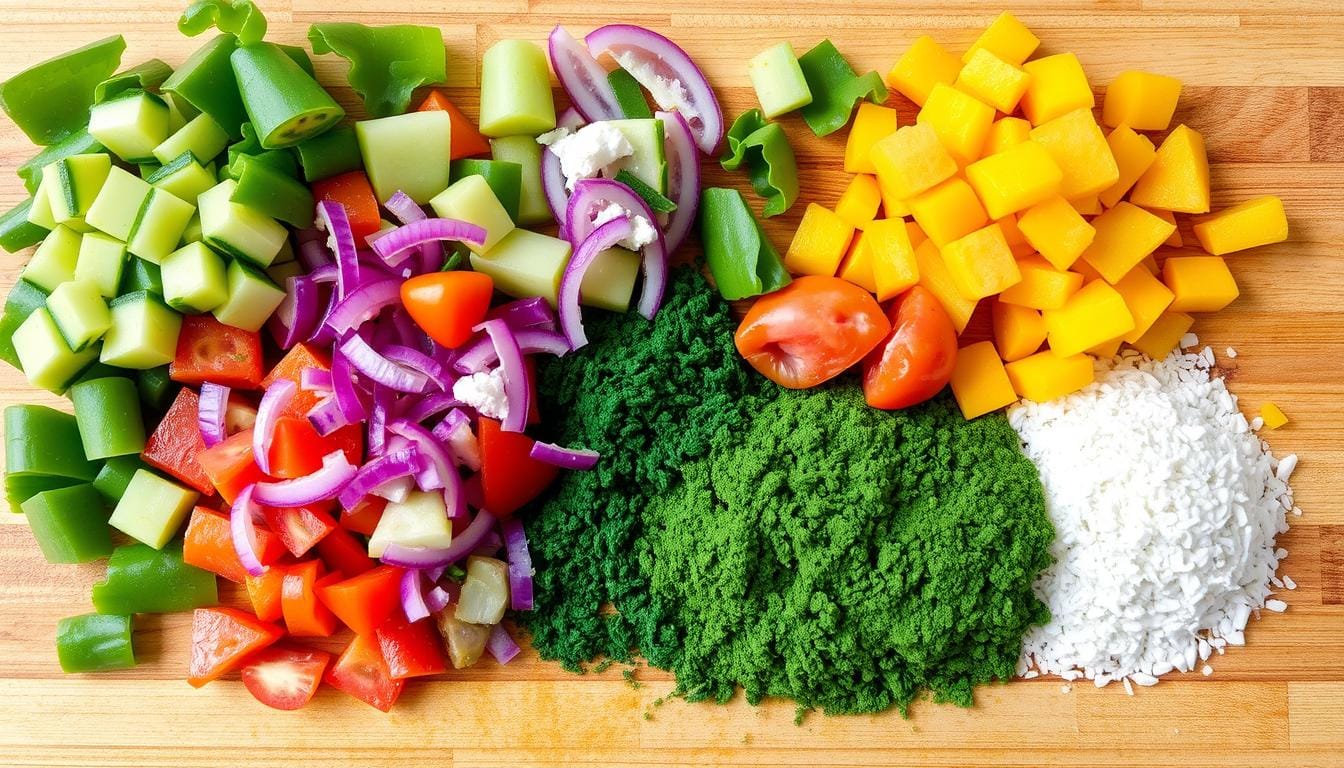As an avid aquarium enthusiast, I know how crucial it is to feed your fish well. Store-bought fish food often doesn’t cut it, leaving your fish wanting more. That’s why I’m excited to share my favorite homemade fish food recipe. It’s a mix of fresh, healthy ingredients that will make your fish happy.
Key Takeaways
- Homemade fish food offers high protein content (>55% by dry weight) and can be customized for different fish species.
- A basic recipe includes raw or cooked meat (e.g., canned salmon, fish fillet, shrimp), powdered algae (spirulina or chlorella), and gelatin.
- This recipe is flexible and can be adjusted based on specific nutritional needs of fish.
- Homemade fish food allows you to control the ingredients, ensuring optimal nutrition for your aquatic companions.
- Preparing your own fish food can be a cost-effective and rewarding way to provide your fish with a balanced, high-quality diet.
Why Choose Homemade Fish Food?
Making your own fish food recipe at home has many benefits. You can pick the best ingredients for your fish. This way, you make sure they get the nutrients they need to stay healthy.
With diy fish food</em>, you can change the recipe to fit your fish’s needs. You can adjust the protein, fat, and other important nutrients. This helps your fish grow strong and healthy.
Benefits of Homemade Fish Food
- Ability to customize the recipe for your fish’s unique needs
- Opportunity to incorporate high-quality, fresh ingredients
- Cost-effective alternative to pricey commercial options
- Flexibility to adjust the nutrient profile as your fish’s requirements change
Cost-Effectiveness of DIY Recipes
Homemade fish food is often cheaper than buying it. You can use ingredients like canned salmon or shrimp. These are great for your fish and cost less than commercial food.
Ensuring Nutritional Balance
When you make your own <em>fish food recipe from home, you control the diet. You can make sure your fish get the right mix of nutrients. This helps them grow well and stay healthy.

Ingredients You’ll Need
Creating homemade fish food lets you use many fresh, nutritious ingredients. You’ll find everything from common items to special parts. These pieces make sure your fish get a balanced diet.
Common Ingredients for Freshwater Fish
Freshwater fish need protein-rich foods like fresh fish, shrimp, and chicken. Vegetables like peas, beans, and zucchini add vitamins and minerals. Gelatin, pectin, or agar keep the homemade fish food together.
Specialized Ingredients for Saltwater Fish
Saltwater fish need a diet closer to their ocean home. Along with common foods, add spirulina, kelp, and seaweed. These items help match their natural diet.
Optional Supplements and Additives
- Calcium sources: Good for growing young fish
- Astaxanthin: Makes fish colors more vibrant
- Omega-rich oils: Great for breeding or egg-laying fish
Choosing and mixing these fresh fish food and homemade fish food ingredients carefully makes a nutritious meal. It’s also something your fish will enjoy.

Preparing Your Fish Food
Making your own fish food is rewarding and saves money. It gives your fish a fresh, nutritious meal. Here’s how to make it step by step.
Step-by-Step Preparation Guide
- Gather your ingredients: Start by collecting all the necessary components, such as seafood, vegetables, and any supplements or additives you plan to include.
- Thoroughly blend the ingredients: Use a food processor or high-powered blender to blend the ingredients until they are evenly mixed and have a smooth, homogeneous texture.
- Combine with heated gelatin solution: In a separate container, prepare a warm gelatin solution by dissolving powdered gelatin in water. Slowly add this solution to the blended ingredients, stirring continuously to ensure a consistent mixture.
- Spread the mixture: Pour the blended mixture onto a clean, flat surface and use a spatula or rolling pin to spread it into a thin, even slab.
- Allow to cool and solidify: Let the mixture cool and solidify, either at room temperature or in the refrigerator, until it has a firm, gel-like consistency.
- Cut or break into portions: Once the mixture has set, use a knife or other utensil to cut or break the slab into individual servings or bite-sized pieces for easy feeding.
Tips for Proper Mixing and Blending
Getting the right consistency is key for a good fish food. Here are some tips for mixing and blending:
- Adjust water content: Monitor the water content of the mixture and add more or less as needed to achieve the desired consistency. The mixture should be smooth and spreadable, but not too runny.
- Blend thoroughly: Take the time to blend the ingredients thoroughly, ensuring even distribution of nutrients and a uniform texture.
- Incorporate gelatin effectively: When adding the gelatin solution, do so while the mixture is still warm to facilitate proper binding and solidification.
By following these steps and tips, you can make a homemade fish food that’s good for your fish. It meets their dietary needs and is a high-quality meal.
Storage and Preservation Methods
Keeping your homemade fish food fresh is key for your fish’s health. There are a few important steps to follow when storing homemade fish food.
Freezing vs. Refrigerating
The freezer is best for long-term storage. Freezing your fish food in thin slabs in zip-lock bags makes it easy to portion and thaw quickly. For shorter storage, the fridge works, but the freezer is better for longer life.
Shelf Life of Homemade Fish Food
Homemade fish food can last months in the freezer. Make sure it’s sealed well to avoid air and spoilage. Fish food in the fridge lasts only a few weeks.
By using these simple storage tips, you can keep your fish food fresh for longer. This ensures your fish stay healthy and well-fed.
Feeding Your Fish with Homemade Food
Feeding your fish the right amount of homemade food is key for their health. Be aware of your fish species’ needs and their appetite. Aim to give them just enough food for them to eat in a few minutes.
How Much to Feed Your Fish
The right amount of homemade food depends on your fish’s size, metabolism, and the food’s nutrient density. A good starting point is to feed them an amount equal to the size of their eye or mouth. Don’t overfeed, as it can harm water quality and your fish’s health.
Feeding Frequency and Timing
- Feed your fish 2-3 times a day, with at least 4-6 hours between meals.
- Spread the food evenly in the aquarium so all fish can eat.
- Watch how your fish behave and eat to find the best feeding schedule for your tank.
Signs of Overfeeding
Watching your fish and the tank’s water quality can show if you’re overfeeding. Look out for these signs:
- Food that’s not eaten settles at the tank’s bottom.
- Cloudy or dirty water.
- Too much waste, causing water quality problems.
- Fish that seem tired or don’t want to eat.
By keeping an eye on your fish’s eating habits and adjusting the food amounts, you can make sure they get the nutrients they need. This helps keep your tank healthy and balanced.
Customizing Your Fish Food Recipe</h2></h2>
Creating fish food recipes means choosing ingredients that fit your fish’s needs. You can adjust the protein, fat, and nutrients. This way, your fish get a balanced and healthy diet.
Tailoring Recipes for Different Fish Species
Every fish species needs something different. For example, breeding fish need more fat, 10-15% by dry weight, to help them reproduce. Young fish need more calcium and phosphorus for growth.
Stay away from kale, broccoli, cauliflower, and cabbage. They can harm your water quality. Also, use spinach carefully because of oxalic acid risks.
Adjusting Ingredients for Special Needs
Some fish need special diets or have health issues. For fish with sensitive stomachs, use less fiber and more digestible proteins.
Choosing the right ingredients for your homemade fish food is key. Try different recipes and watch how your fish react. This will help you find the best mix for your aquarium.
Frequently Asked Questions
What is the best homemade food for fish?
Homemade fish food can be tailored to your fish’s dietary needs, providing them with a balanced diet and ensuring their health and vitality. Here are some of the best homemade food options for fish:
- Vegetables: Blanched peas, spinach, lettuce, and zucchini are excellent for herbivorous and omnivorous fish.
- Protein Sources: Boiled eggs, shrimp, earthworms, and white fish meat are great protein options for carnivorous and omnivorous fish.
- Carbohydrates: Rolled oats and wheat flour can provide energy.
- Algae or Spirulina Powder: Rich in essential nutrients for herbivorous fish.
- Gelatin or Agar-Agar: Used to bind ingredients together into pellets.
How do you make homemade fish feed?
Here’s a step-by-step guide to make homemade fish feed:
- Gather Ingredients:
- Protein: Shrimp, white fish, or chicken liver.
- Vegetables: Spinach, carrots, and peas.
- Carbohydrates: Cooked rice or oats.
- Supplements: Spirulina powder or fish oil.
- Blend Ingredients:
- Boil vegetables and blend them with protein sources into a smooth paste.
- Add Binding Agent:
- Mix gelatin or agar-agar with hot water, then combine it with the paste.
- Shape and Store:
- Spread the mixture onto a tray, cut into small pieces, and freeze.
How to make high quality fish food?
To make high-quality fish food, focus on balance and nutritional density:
- Use Fresh Ingredients: Choose high-quality vegetables, proteins, and supplements.
- Customize for Species: Research the dietary needs of your specific fish species.
- Include Vitamins and Minerals: Add fish-safe multivitamins or calcium powder.
- Ensure Proper Storage: Freeze or dry the food to prevent spoilage.
What are the ingredients for fish food?
The basic ingredients for homemade fish food include:
- Protein Sources:
- Fresh shrimp
- Fish fillets
- Chicken liver
- Boiled eggs
- Vegetables:
- Spinach
- Peas
- Carrots
- Kale
- Carbohydrates:
- Rolled oats
- Cooked rice
- Wheat flour
- Supplements:
- Spirulina powder
- Fish oil
- Calcium powder
- Binding Agents:
- Gelatin
- Agar-Agar
By creating fish food tailored to their needs, you can improve your fish’s health, growth, and coloration.

